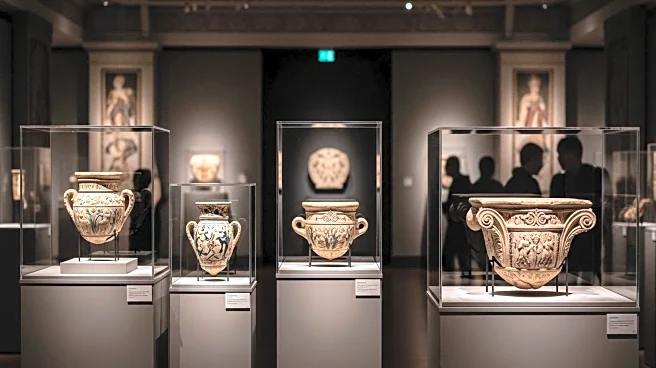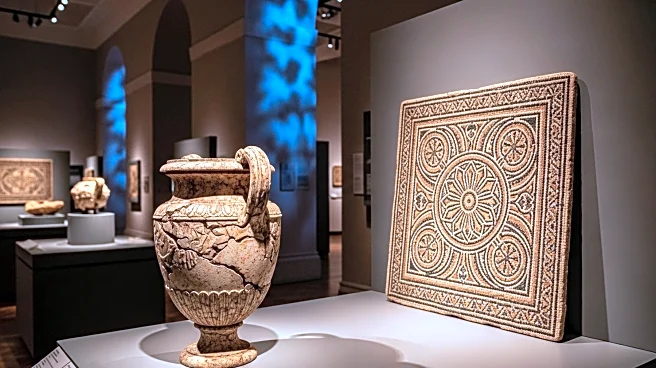What's Happening?
The Manhattan District Attorney's office has been actively seizing antiquities from dealers, collectors, and museums, with around 6,000 objects seized since 2017. These actions have led to most items being repatriated to their countries of origin, such as India, Mexico, China, and Greece. A recent court ruling allowed the DA to seize the Egon Schiele drawing, Russian War Prisoner (1916), from the Art Institute of Chicago, which is now appealing the decision. The DA's approach, which disregards foreign good faith purchases and limitation periods, has raised concerns among art dealers about the volatility of legal title in New York.
Why It's Important?
The DA's aggressive stance on antiquities has significant implications for the art market in New York and beyond. It challenges the legal rights of possessors, as the DA considers any work of art once stolen to remain stolen, regardless of current ownership. This approach contrasts with other jurisdictions that honor foreign good faith purchases. The ruling could deter art dealers from sending works to New York, potentially impacting the city's art market. Museums and collectors may need to ensure cast-iron provenance or immunity from seizure protection to avoid legal complications.
What's Next?
The Art Institute of Chicago's appeal against the court's decision may set a precedent for future cases involving the DA's seizure of art. If the ruling is upheld, it could lead to increased scrutiny and caution among art dealers and collectors when bringing works to New York. The DA's actions may prompt discussions on the balance between repatriating stolen art and protecting the rights of current possessors. The art community will likely watch the appeal closely, as its outcome could influence future legal strategies and policies regarding antiquities.
Beyond the Headlines
The DA's approach raises ethical questions about the ownership and repatriation of cultural artifacts. It challenges the notion of legal title and the responsibilities of museums and collectors in verifying the provenance of their collections. The case highlights the ongoing debate over the repatriation of cultural heritage and the role of law enforcement in addressing historical thefts. It may lead to broader discussions on international cooperation and legal frameworks for handling antiquities trafficking.













